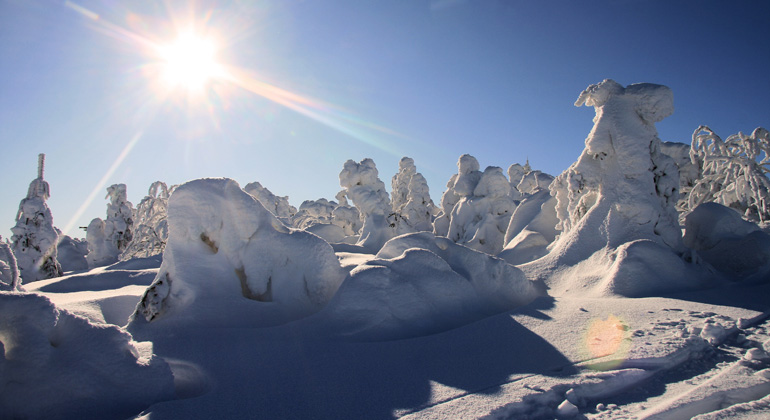Winter weather extremes in the US and Europe
Messing with giant airstreams in the stratosphere – Over Thanksgiving, arctic air masses are predicted to bring record-cold temperatures and frigid winds to the Northeast of the United States.
Driver for such winter weather extremes is often the stratospheric polar vortex, a band of fast moving winds 30 kilometers above the ground. In winter, when the polar vortex is disturbed by upward-blowing air masses, this can bring cold spells over Northeastern America or Eurasia, a new study now shows. And paradox as it might seem, climate change might further disrupt the complex dynamics in the atmosphere – bringing us not only more hot extremes in summer but potentially also cold spells in winter.
“There are two different ways how the stratospheric polar vortex affects winter weather,” explains Marlene Kretschmer from the Potsdam Institute for Climate Impact Research (PIK), lead-author of the study now published in npj Climate and Atmospheric Science. Usually planetary waves, giant airstreams in the upper troposphere, move horizontally, conveying chains of high- and low-pressure systems. “However, in winter these planetary waves do also move up and down, vertically striking the polar vortex in the stratosphere. The polar vortex can either absorb the planetary waves causing cold spells over Europe and Russia, or reflect them bringing icy temperatures over the US and Canada.”
The scientists analyzed the daily stratospheric data in the polar region from 1979 to 2017. “Within this data we found certain patterns of the polar vortex and asked ourselves: How might these patterns be related to extreme winter weather?” says Vivien Matthias from PIK, co-author of the study. “And indeed we showed in our study that the physical mechanisms behind these patterns of reflection and absorption are strongly related to the cold spells over Northeastern America and Eurasia in the past years.” To disentangle the exact mechanisms, new innovative machine learning methods were used to extract cause-effect relationships in the atmosphere. Identifying the intricate mechanisms is an important step forward.
Cold extremes can cause substantial damages for people and businesses
“Winter cold extremes affect many millions of people in the most densely populated regions of the world, causing hardship to residents, taxing infrastructure and resulting in economic losses,” says Judah Cohen, co-author from Atmospheric and Environmental Research (AER), a Verisk (Nasdaq:VRSK) business based in Lexington, US. “We found a mechanism that targets the United States in particular for such cold spells that drain energy supplies and can cripple power grids by these events such as late December and early January last winter, repeatedly in winter 2013/14 and even this Thanksgiving holiday. Through improved understanding of the behaviour of the polar vortex and its relationship to winter weather, we can better predict such severe cold weeks and at longer lead times.”
Investigating the link between greenhouse-gas emissions, atmospheric flows and extreme weather events on the ground is cutting-edge science with huge practical implications. “It is very important to understand how climate change might affect such cold winter weather extremes,” adds co-author Dim Coumou from PIK and Vrije Universiteit Amsterdam, Netherlands. “The uncertainties are quite large, but global warming provides a clear risk given its potential to disturb circulation patterns driving our weather. To avoid serious risks of climate change such as extreme weather we must start ratcheting up our ambitions for climate-stabilization.”
- Marlene Kretschmer, Judah Cohen, Vivien Matthias, Jakob Runge, Dim Coumou (2018): The different stratospheric influence on cold-extremes in Eurasia and North America. npj Climate and Atmospheric Science [DOI: 10.1038/s41612-018-0054-4]








